You can never have too many indoor plants. Surely that’s a fact! Not only do they instantly elevate any living space, but they also bring with them a lot of other benefits, like cleaner indoor and and in many studies, they’ve even been shown to improve your overall mental well-being by introducing a touch of nature into your indoor spaces.
We’ve also including a few tips on lighting and watering for each plant below, but generally you should avoid over watering and keep your plants out of drafts and direct sunlight. That’s really all there is to having a green thumb.
Here are ten best indoor plants that can make a stylish statement in any space.
1. The Chinese Evergreen
The Chinese Evergreen (Aglaonema) is a large-leaf, lower lying plant does well in a room with lower light.
- Light: Chinese Evergreens are adaptable and can thrive in low to bright, indirect light. However, they tend to do best in moderate to low light conditions. Avoid direct sunlight, as it can scorch the leaves.
- Watering: Allow the top inch or so of the soil to dry out between waterings. These plants prefer to be kept evenly moist but not waterlogged.
- emperature: They prefer temperatures between 65°F to 80°F (18°C to 27°C). Avoid exposing them to drafts or sudden temperature fluctuations.
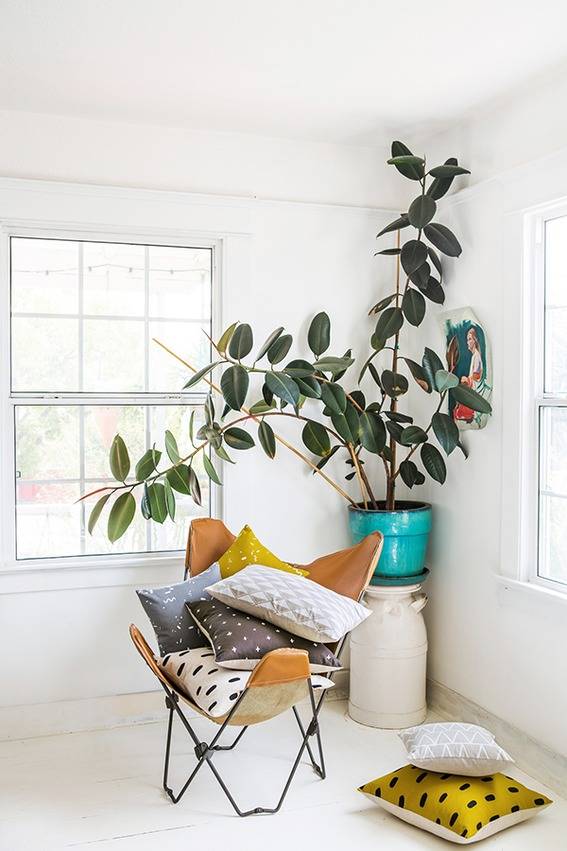
2. The Rubber Plant
Rubber plants (Ficus elastica) are popular indoor plants known for their attractive glossy dark green leaves and ease of care. These plants can last a long time and become tall.
- Light: Rubber plants thrive in bright, indirect light. Avoid direct sunlight, as it can scorch the leaves. They can tolerate some lower light conditions, but their growth may slow down.
- Watering: Allow the top inch or so of soil to dry out between waterings. These plants prefer to be kept evenly moist but not soggy. Water thoroughly when you do water, and ensure the pot has good drainage to prevent overwatering, which can lead to root rot.
- Temperature: Rubber plants prefer temperatures between 65°F to 80°F (18°C to 27°C). They can tolerate slightly cooler temperatures but are sensitive to cold drafts.
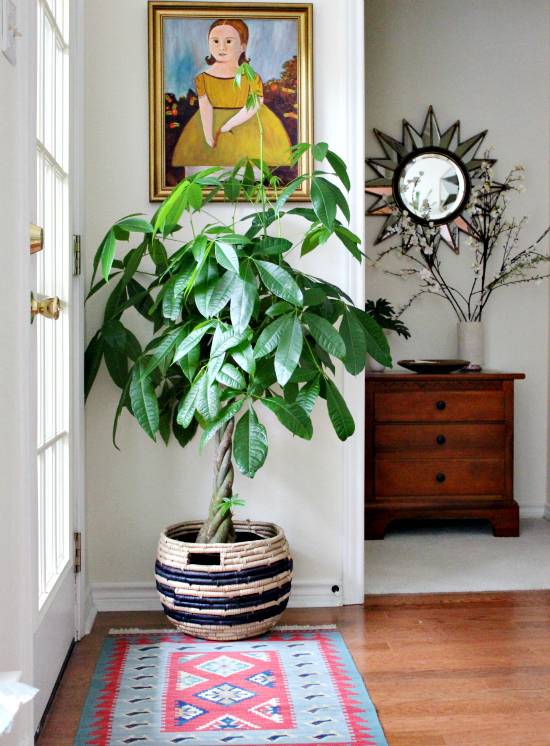
3. Money Tree
Money Trees (Pachira aquatica) are popular houseplants known for their unique braided trunks and symbolic association with good luck and prosperity. My hubby just bought me a tiny version of this plant and my goal is to grow it tall like the one in the above photo.
- Light: Money Trees thrive in bright, indirect light. They can tolerate some direct sunlight, but too much can scorch their leaves. Place them near a window with filtered sunlight or in a spot with bright, indirect light.
- Watering: Allow the top 2-3 inches of soil to dry out before watering. Money Trees are susceptible to root rot if kept consistently soggy. Water thoroughly, but ensure the pot has good drainage to prevent standing water at the bottom.
- Temperature and Humidity: Money Trees prefer temperatures between 65°F to 80°F (18°C to 27°C). They are sensitive to cold drafts and should be protected from sudden temperature drops. They also appreciate slightly higher humidity levels. You can mist their leaves occasionally or place a tray of water near the plant to increase humidity. However, they can adapt to normal indoor humidity levels.
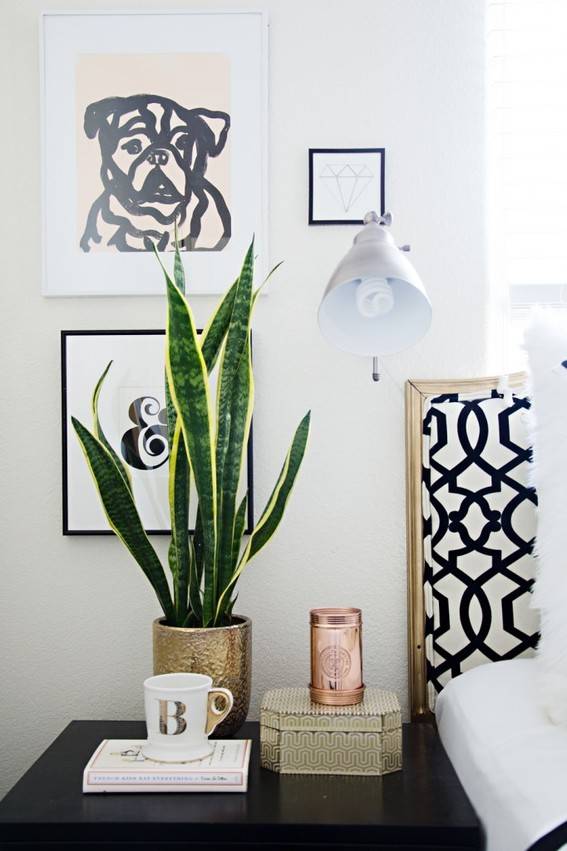
4. Snake Plants
Snake plants, also known as Sansevieria or mother-in-law’s tongue, are popular houseplants known for their low maintenance requirements. They are very durable plants and go a long time without water. Here’s how to take care of them:
- Light: Snake plants are versatile and can tolerate a wide range of light conditions. They thrive in indirect sunlight but can also survive in low-light conditions. They grow best and maintain their vibrant green color with bright, indirect light.
- Watering: One of the most common mistakes is overwatering. Snake plants are adapted to survive periods of drought, so it’s better to let them dry out between waterings. Water sparingly, allowing the top inch or two of soil to dry completely before watering again. During the growing season (spring and summer), water every 2-6 weeks, and in the dormant season (fall and winter), reduce watering to once every 6-8 weeks.
- Soil: Use a well-draining potting mix to prevent overwatering. A cactus or succulent mix is a good choice.
- Temperature and Humidity: Snake plants are quite adaptable to different temperature and humidity levels. They do well at normal room temperature, and they can tolerate lower humidity levels.
Remember, snake plants are known for their durability and ability to survive neglect. If in doubt, it’s usually better to underwater than overwater. With minimal care, your snake plant can add a pop of color to your darkest corners.
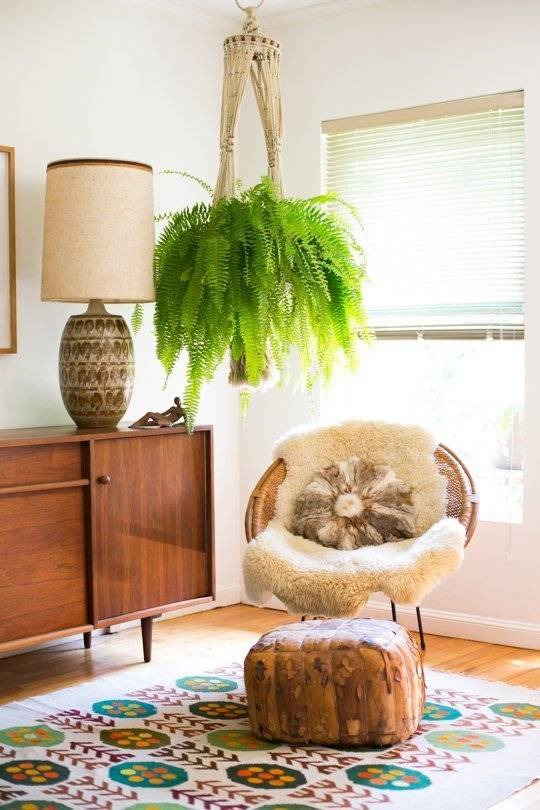
5. Boston Fern
The Boston Fern (Nephrolepis exaltata) is a great hanging plant and can give some serious visual impact to a room. This plant can be a statement piece, but is a little “diva-ish” in the watering and pruning department.
The Boston fern is also known to be one of the best air purifiers in the plant world.
- Light: Boston Ferns prefer bright, indirect light. They can tolerate some morning or late afternoon sun but should be protected from direct sunlight, which can scorch their delicate fronds.
- Watering: These ferns like to be consistently moist but not soggy. Water when the top inch of the soil feels slightly dry to the touch. Water thoroughly, allowing water to drain from the pot. Avoid letting the plant sit in standing water, which can lead to root rot.
- Temperature: Keep your Boston Fern in a room with temperatures between 60°F to 75°F (15°C to 24°C). They are sensitive to temperature fluctuations and drafts, so avoid placing them near heating or cooling vents.
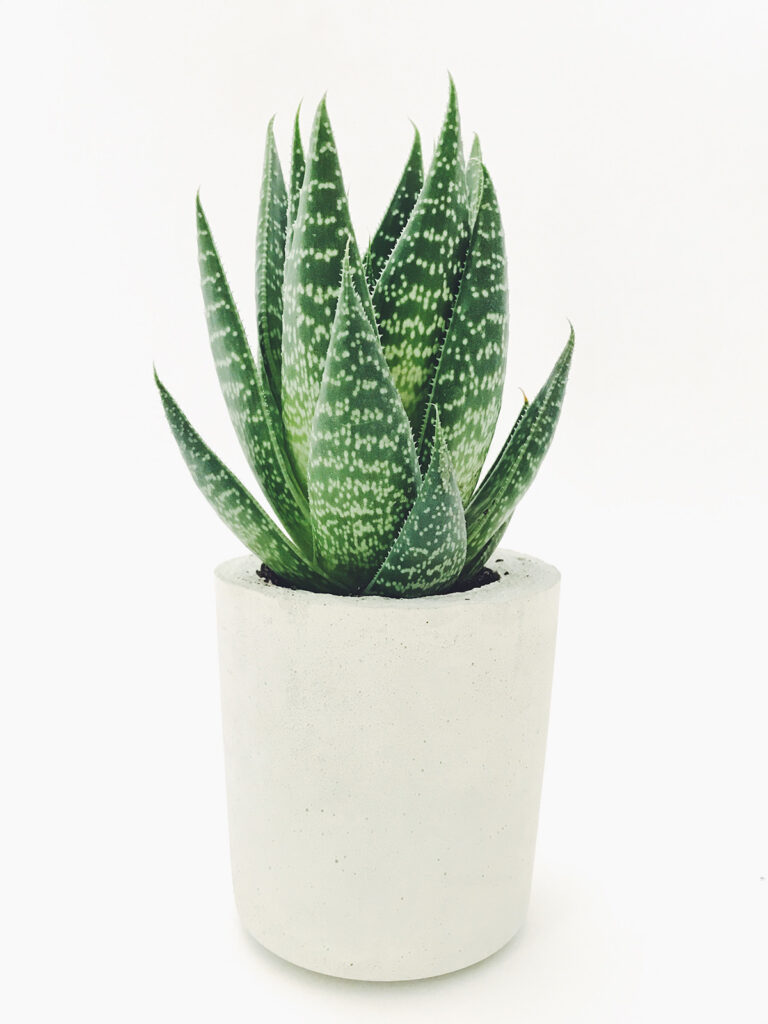
6. Aloe Vera Plant
The Aloe Vera Plant is a useful plant and also one that has survived in my home for about a year so far.
It is a useful plant for natural home remedies. For example, if you get burned snap a leaf and rub the aloe on the burn.
- Light: Aloe vera plants thrive in bright, indirect sunlight. They can also tolerate some direct sunlight, but too much can scorch their leaves. A sunny windowsill with filtered sunlight is ideal.
- Watering: Aloe vera is a succulent, and it stores water in its leaves. Allow the top 1-2 inches of the soil to dry out completely between waterings. Water sparingly and be cautious not to overwater, as the roots are susceptible to rot. Water less frequently during the dormant winter months.
- Temperature: Aloe vera prefers temperatures between 59°F to 77°F (15°C to 25°C). It can tolerate brief periods of colder temperatures but should be protected from frost.
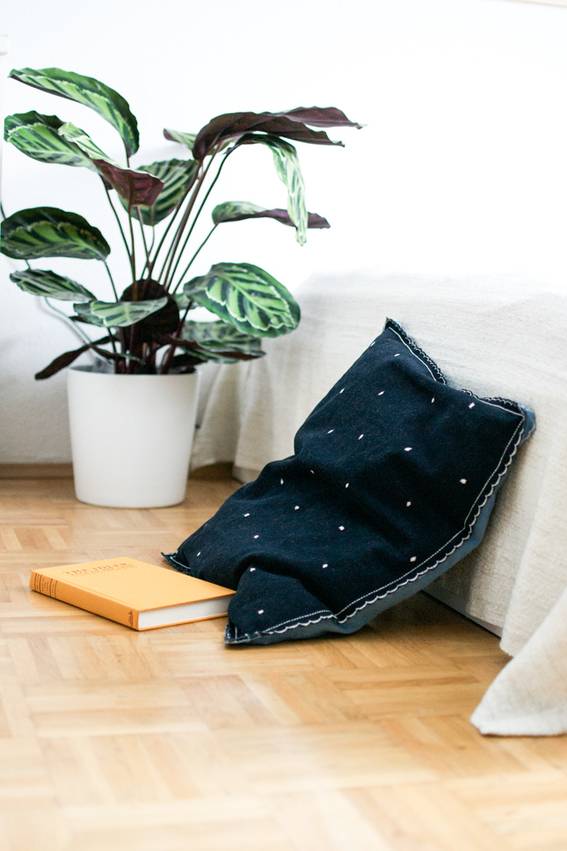
7. The Calathea
The Calathea (or prayer plant) has unique designs of green on its leaves. Some leaves can even have little pops of color. Calathea plants can be a bit finicky, but they reward your efforts with their stunning foliage.
- Light: Calathea plants thrive in bright, indirect light. Avoid direct sunlight, as it can scorch their leaves. If the light is too low, the plant’s markings may fade. Place your Calathea near a north or east-facing window for the best results.
- Watering: Keep the soil consistently moist but not soggy. Water thoroughly when the top inch (2.5 cm) of the soil feels dry to the touch. Ensure proper drainage to prevent root rot. In the growing season (spring and summer), you may need to water more frequently, while in the dormant season (fall and winter), reduce the watering frequency.
- Temperature: Calathea plants prefer temperatures between 65°F to 80°F (18°C to 27°C). Avoid exposing them to drafts or sudden temperature fluctuations.
- Prayer Plant Behavior: Many Calathea species have a unique behavior where their leaves fold up at night and open during the day. This is normal and not a sign of distress.
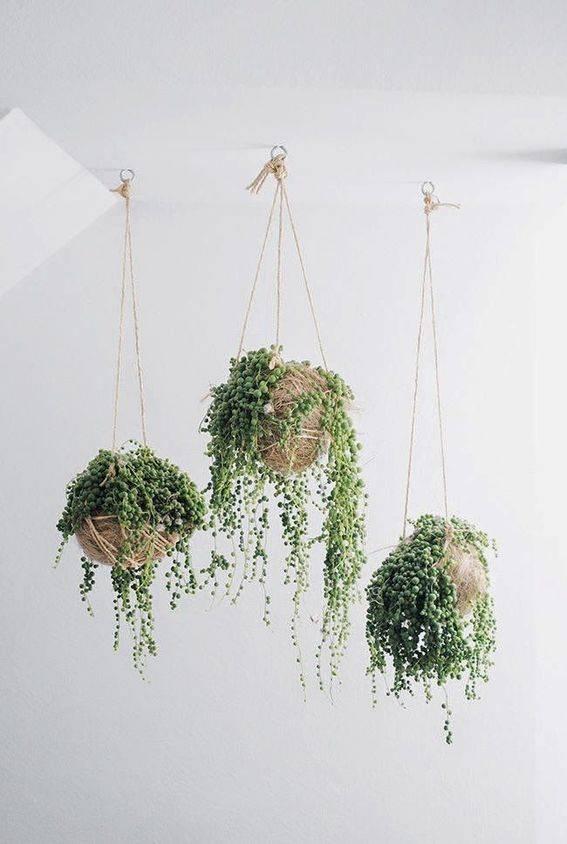
8. String of Pearls
String of Pearls (Senecio rowleyanus) is elegant the way it drapes. It is unique because of the little beads that grow on it’s vines instead of leaves.
Supposedly, it can be toxic, so maybe skip this one if you have small kids or pets that might eat your plants. The plant can be potted but is also really pretty hanging plant.
To keep your String of Pearls plant healthy and thriving, follow these care guidelines:
- Light: String of Pearls prefers bright, indirect light. Provide it with filtered sunlight or bright, indirect sunlight for several hours a day. Avoid direct sunlight, which can scorch the delicate leaves.
- Watering: Water your String of Pearls sparingly but thoroughly. Allow the soil to dry out completely between waterings. Typically, you may need to water every 2-4 weeks, depending on your indoor conditions. Be cautious not to overwater, as this can lead to root rot.
- Temperature: Maintain a temperature range of 70°F to 80°F (21°C to 27°C) during the growing season. In the winter, allow it to experience slightly cooler temperatures, around 50°F to 60°F (10°C to 15°C).
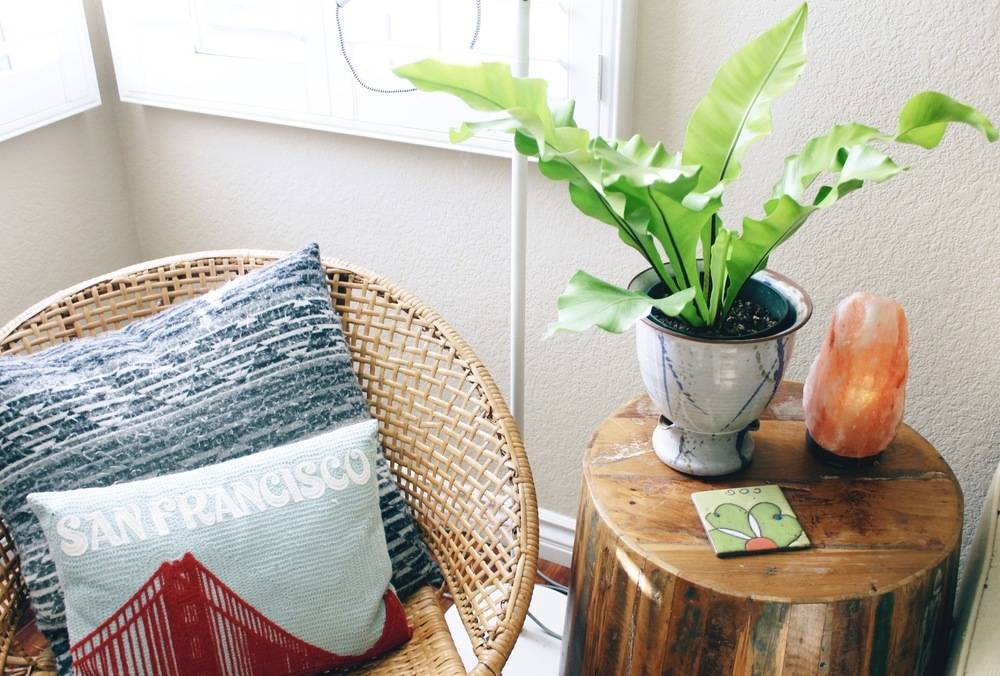
9. Birds Nest Fern (Pet-friendly!)
Bird’s Nest Fern (Asplenium nidus) is a beautiful and popular indoor plant known for its lush, arching fronds. These cuties, on the other hand, are in fact pet safe.
- Light: Bird’s Nest Ferns prefer bright, indirect light. Avoid direct sunlight, as it can scorch the leaves. Place your fern near a north or east-facing window where it can receive filtered sunlight.
- Watering: Keep the soil consistently moist but not waterlogged. Water thoroughly when the top inch (2.5 cm) of the soil feels slightly dry to the touch. Watering frequency will vary depending on environmental conditions, but aim to water every 1-2 weeks. Reduce watering slightly during the dormant season (fall and winter).
- Temperature: Maintain a temperature range of 65°F to 75°F (18°C to 24°C). Avoid exposing the fern to temperature extremes and drafts.
Bird’s Nest Ferns can be a bit more demanding in terms of humidity compared to some other houseplants, but with proper care, they can thrive indoors.
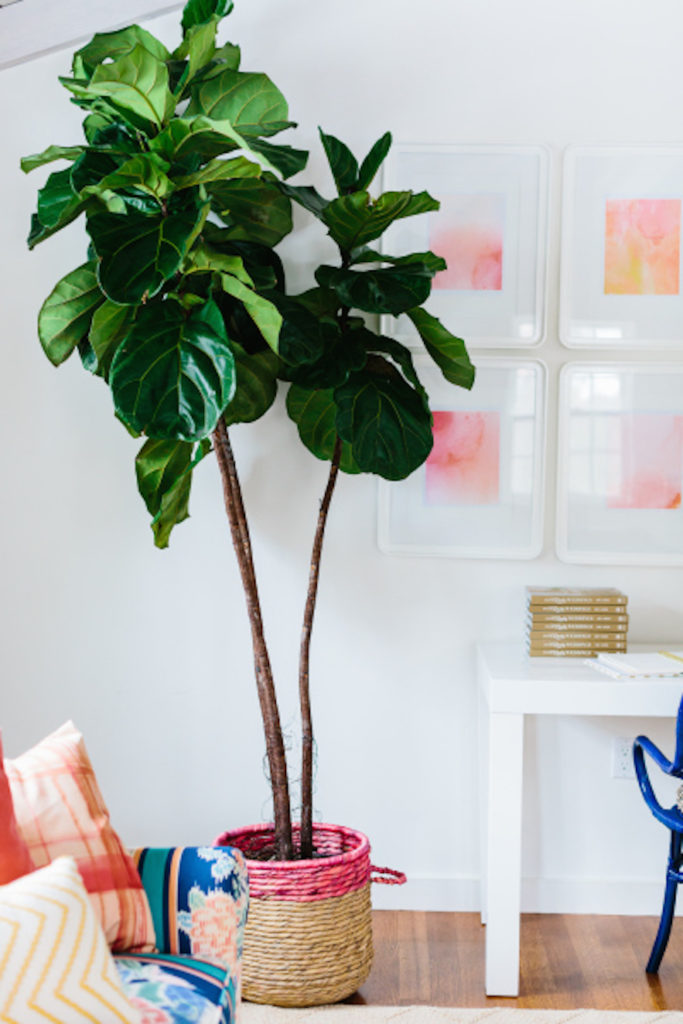
10. The Fiddle Leaf Fig
The Fiddle Leaf Fig (Ficus lyrata) has become the “indoor plant darling” of interior design, home decor, and styling. It deserves it as it is a stunning plant known for its large, dramatic, and violin-shaped leaves.
Style Me Pretty has a pretty comprehensive list of how to keep one thriving in your home.
- Light: Fiddle Leaf Figs thrive in bright, indirect sunlight. They require a lot of light to grow well, but avoid direct sunlight, as it can scorch the leaves. Place your plant near a bright window, preferably with filtered light.
- Watering: Allow the top inch (2.5 cm) of the soil to dry out between waterings. Water thoroughly when you do water, but avoid letting the plant sit in standing water, as it can lead to root rot. The frequency of watering will vary depending on factors like humidity, temperature, and pot size, but generally, you may need to water every 1-2 weeks.
- Temperature: Keep your Fiddle Leaf Fig in a room with temperatures between 65°F to 75°F (18°C to 24°C). Avoid exposing it to drafts or sudden temperature fluctuations.
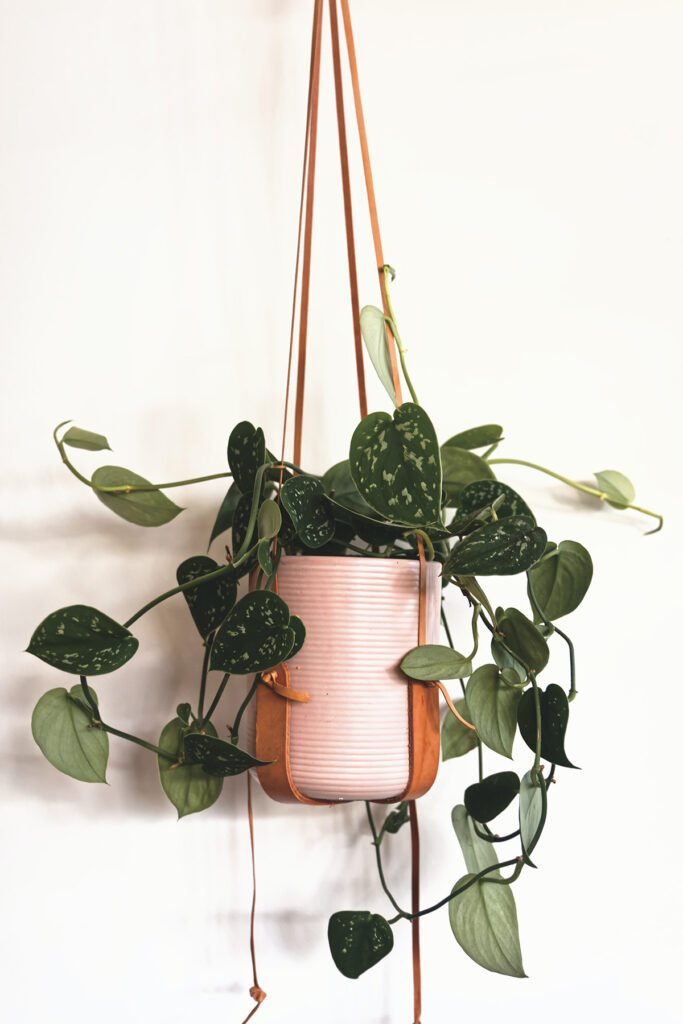
11. Pothos
Pothos (Epipremnum aureum), also known as Devil’s Ivy, is one of the easiest and most popular indoor plants to care for.
- Light: Pothos are adaptable and can thrive in a variety of light conditions. They do best in bright, indirect light, but they can tolerate lower light levels. Avoid direct sunlight, as it can scorch their leaves.
- Watering: Pothos prefer to dry out slightly between waterings. Water thoroughly when the top inch (2.5 cm) of the soil feels dry to the touch. Be cautious not to overwater, as this can lead to root rot. In general, you may need to water every 1-2 weeks, depending on environmental conditions.
- Temperature: Maintain a temperature range of 65°F to 80°F (18°C to 27°C). Pothos can tolerate slightly cooler temperatures, but they are sensitive to cold drafts.
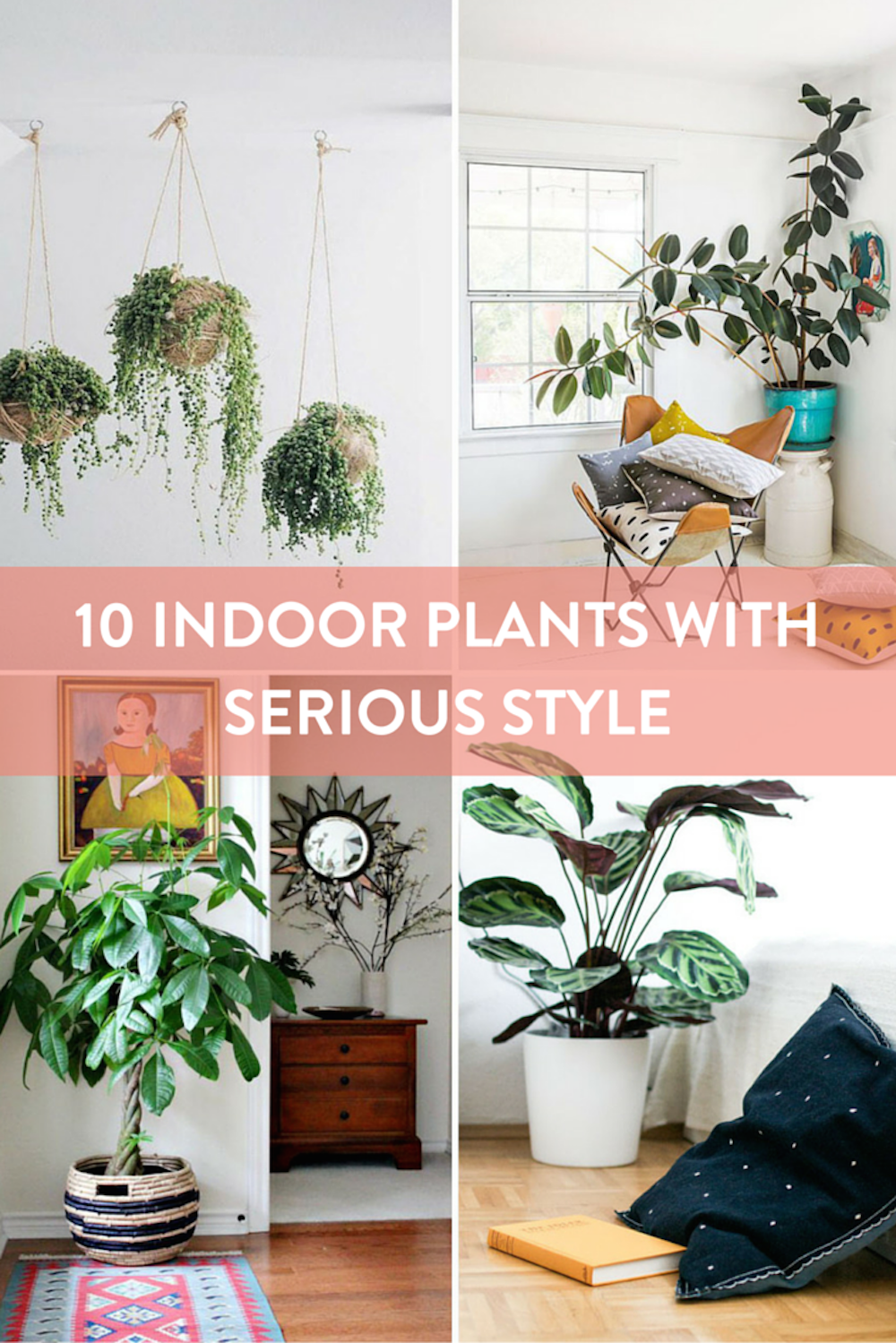
Indoor plants can impact a room like a piece of art while also upgrading the air quality of your home and last for years. If you buy them small they can be quite affordable and believe or not, you can even find them on Amazon.
I would also recommend joining a local indoor plant group on Facebook. It’s a great way to meet your neighbors, learn more about indoor gardening, and get some great deals. There are also a ton of amazing plant ladies on Instagram that are definitely worth a follow!
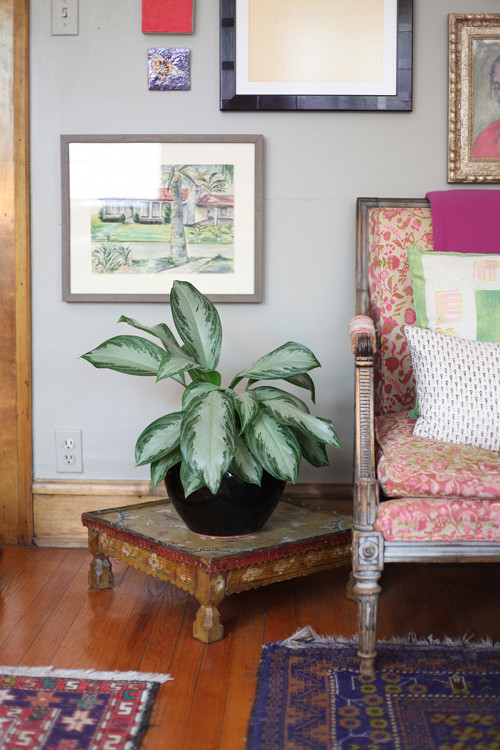
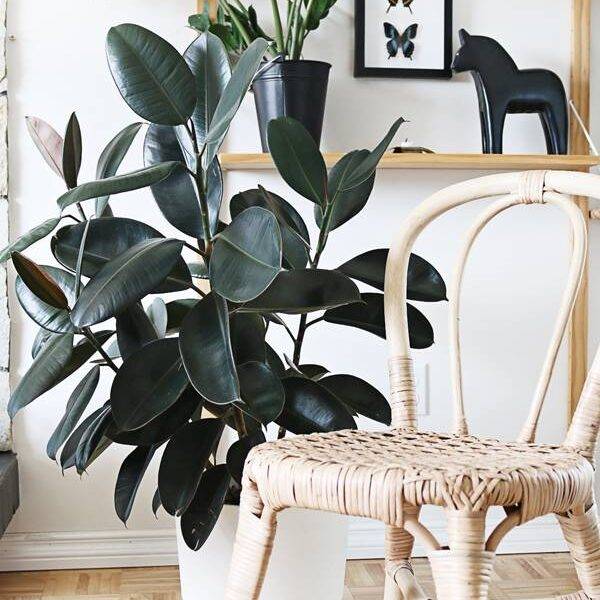
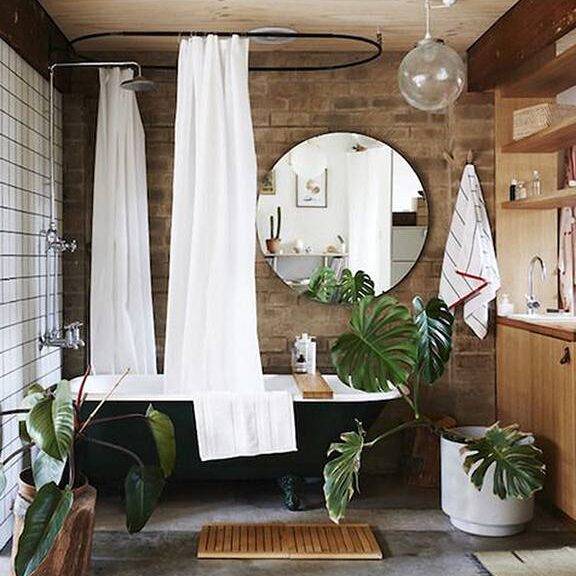
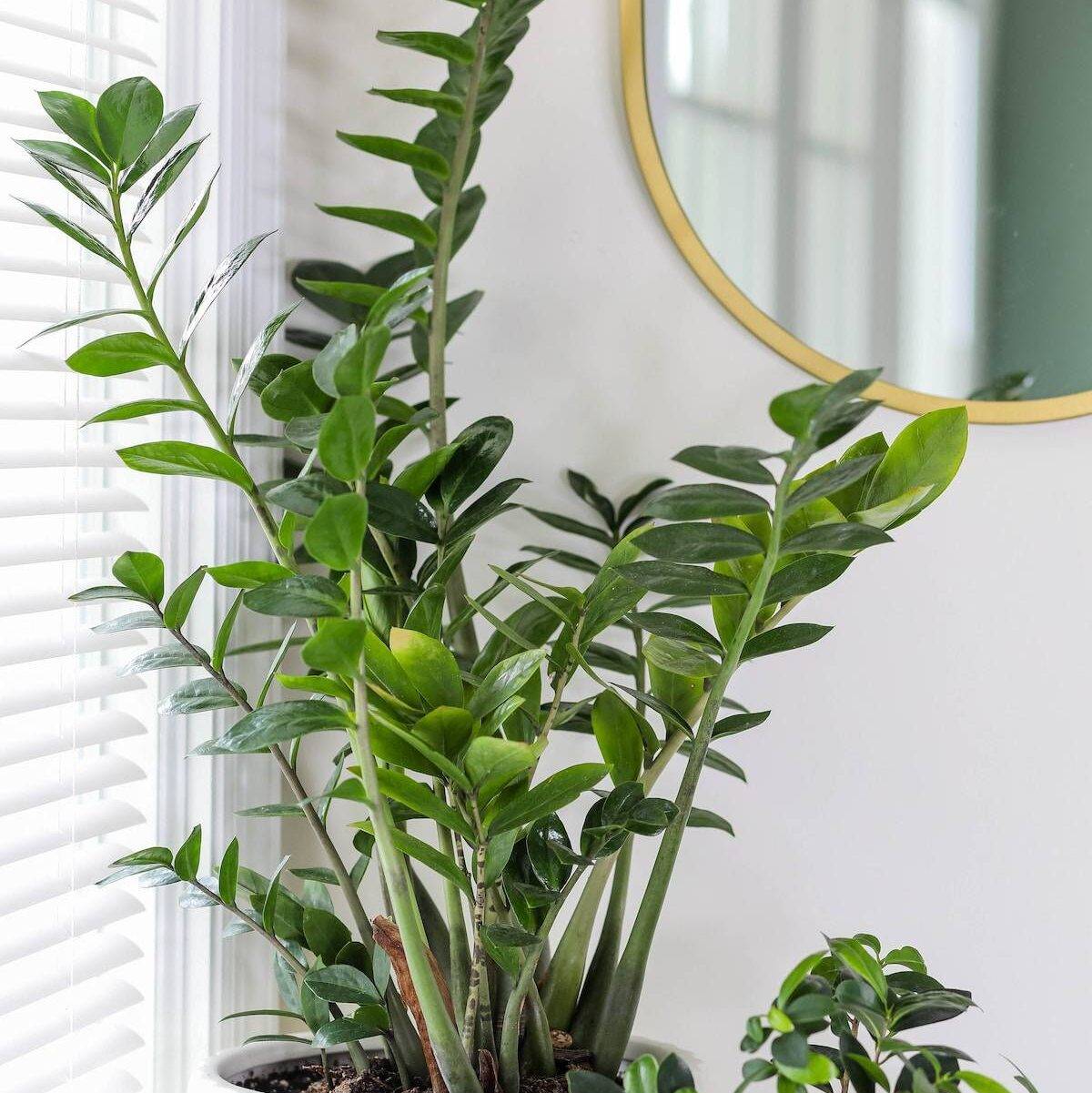
I really like the macrame hanging on the Boston Fern plant. Do you know where I can get the pattern?
@sooz I followed the source link and it looks like the owner bought it on Ebay. I found similar ones there if you search Macrame plant hanger. Etsy might have a pattern.
I am a big fan of Snake Plants! They look awesome, and are just so easy to care for!
Great post Jennifer, thank you for sharing 🙂